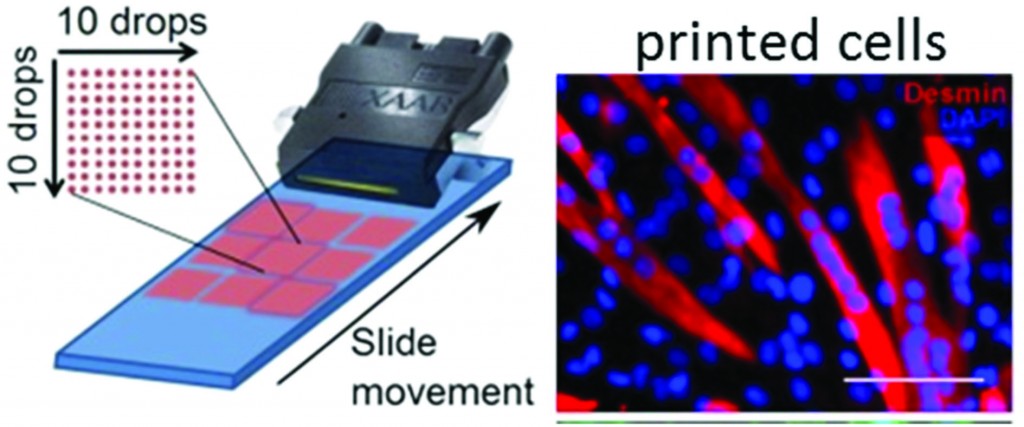A bio-ink to print living cells onto a surface using a commercial printer has been developed by Dr Marc in het Panhuis and colleagues at the University of Wollongong, Australia. Bioprinting can be used for tissue engineering and analytical applications. The bio-ink consists of a gel – gellan gum – that’s used in food additives. The gel makes sure that the cells in the bio-ink remain suspended with no sign of aggregation, which was the problem with previous inks. Aggregation means an uneven distribution of cells being printed out onto a surface.
Bio-ink for printing living cells on demand
Biomater. Sci., 2012, Advance Article. DOI: 10.1039/c2bm00114d
Follow the latest journal news on Twitter @BioMaterSci or go to our Facebook page.
To keep up-to-date with all the latest research, sign-up to our RSS feed or Table of contents alert.











